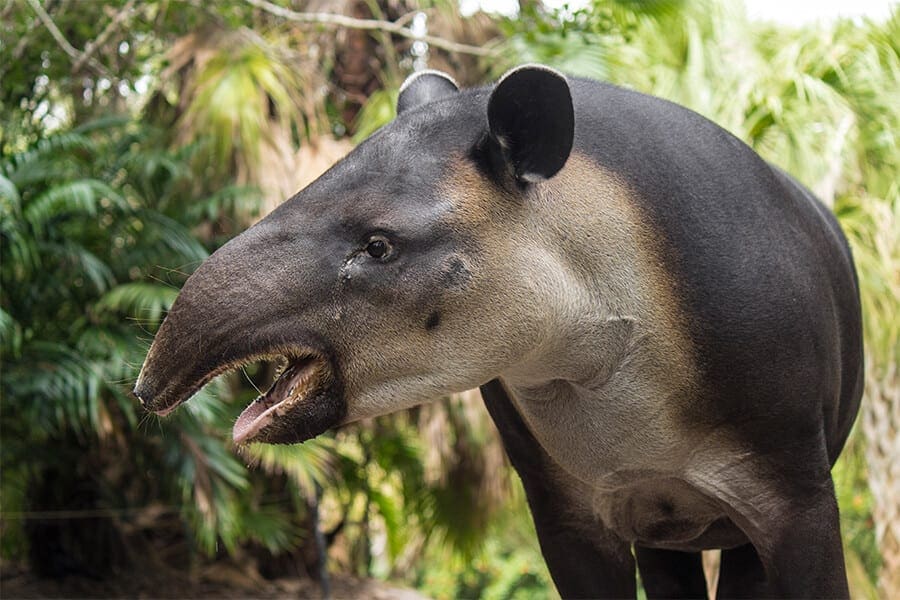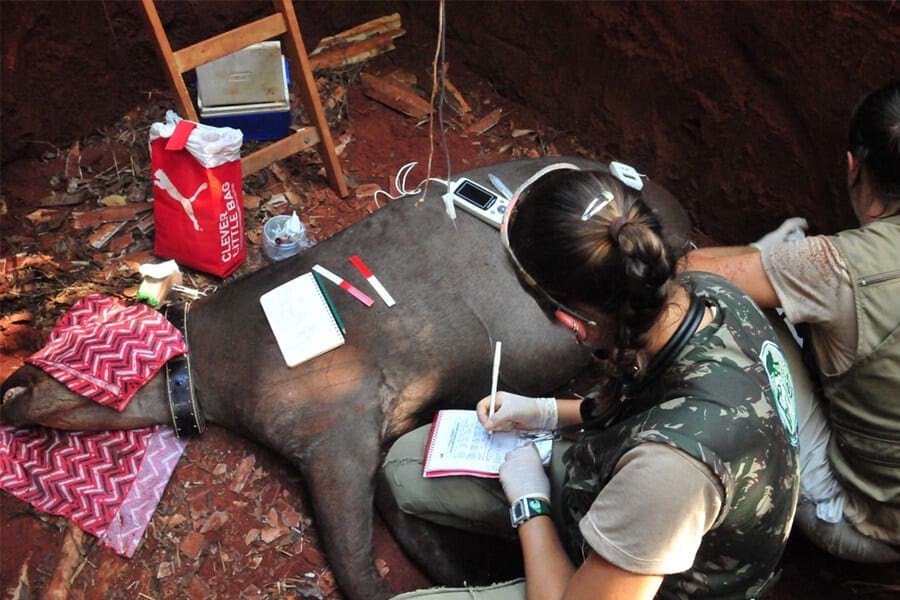

Josie, a Baird’s tapir, shows off her proboscis.
Happy World Tapir Day! You may be asking yourself a question: what in the world ARE tapirs and why do they get a special day? That’s an excellent question and we’re going to help you learn all about them!
These large mammals look sort of like a cross between a pig and an anteater, but they’re most closely related to rhinos. They are hefty creatures (one species can weigh up to 800 pounds!) with comically short legs and stubby tails. The tapir’s most distinctive feature is its proboscis, a trunk-like nose and upper lip that’s flexible enough to grab fruits, leaves and other food items.
Tapirs have been around for a long time—they first appeared in North America about 55 million years ago! Today, three tapir species (and potentially a fourth) are found in Central and South America, while another lives in Southeast Asia. All four species are threatened by habitat loss, hunting and collision with motor vehicles.
You may be asking yourself something else: why tapirs? Another excellent question! Like many rainforest animals, tapirs disperse vegetation by consuming fruits in one location and pooping the seeds out elsewhere; since tapirs are large animals, they consume a lot of fruit and spread a lot of seeds! Tapirs are also an umbrella species; if the diverse expanses of habitat they require to survive are sufficiently protected, many other species will benefit as well.

LTCI personnel examine an anesthetized tapir in the field. Photo by LTCI.
For many years, we’ve partnered with the Lowland Tapir Conservation Initiative (LTCI) to support their research and conservation projects. Using high-tech gadgets like GPS collars and camera traps, LTCI studies tapir ecology, genetics, health and habitat requirements in four distinct biomes throughout Brazil.
Like Brevard Zoo, LTCI’s conservation efforts are complemented by a robust educational program. In the Pantanal and Cerrado regions alone (critical strongholds for tapirs), LTCI has so far reached more than 500 students, 35 ranch landowners and 800 farmers. By sharing the importance of tapirs with local communities and offering economic solutions, LTCI is building a better coexistence between tapirs and people.
